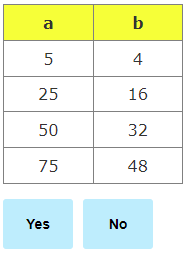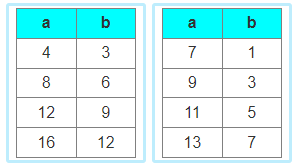
What is a Proportional Relationship
Concept
A proportional Relationship is a statement that two ratios are equal. It can be written in two ways: as two equal fractions ; or using a colon,
.
Rules
Identifying proportional relationships through graphs:
To determine whether two quantities are proportional, graph the quantities on a coordinate plane. If the graph of the two quantities is a straight line through the origin, then the two quantities are proportional.
Identifying proportional relationships through tables:
Write the ratios as fractions and then reduce them.
If the reduced fractions are the same, the ratios are proportional.
Example
Solution
Practice What is a Proportional Relationship

Proportional – when two quantities have a constant ratio or unit rate.
Non-proportional – when two quantities don’t have a constant ratio or unit rate.
Equivalent ratios – ratios that have the same value.







